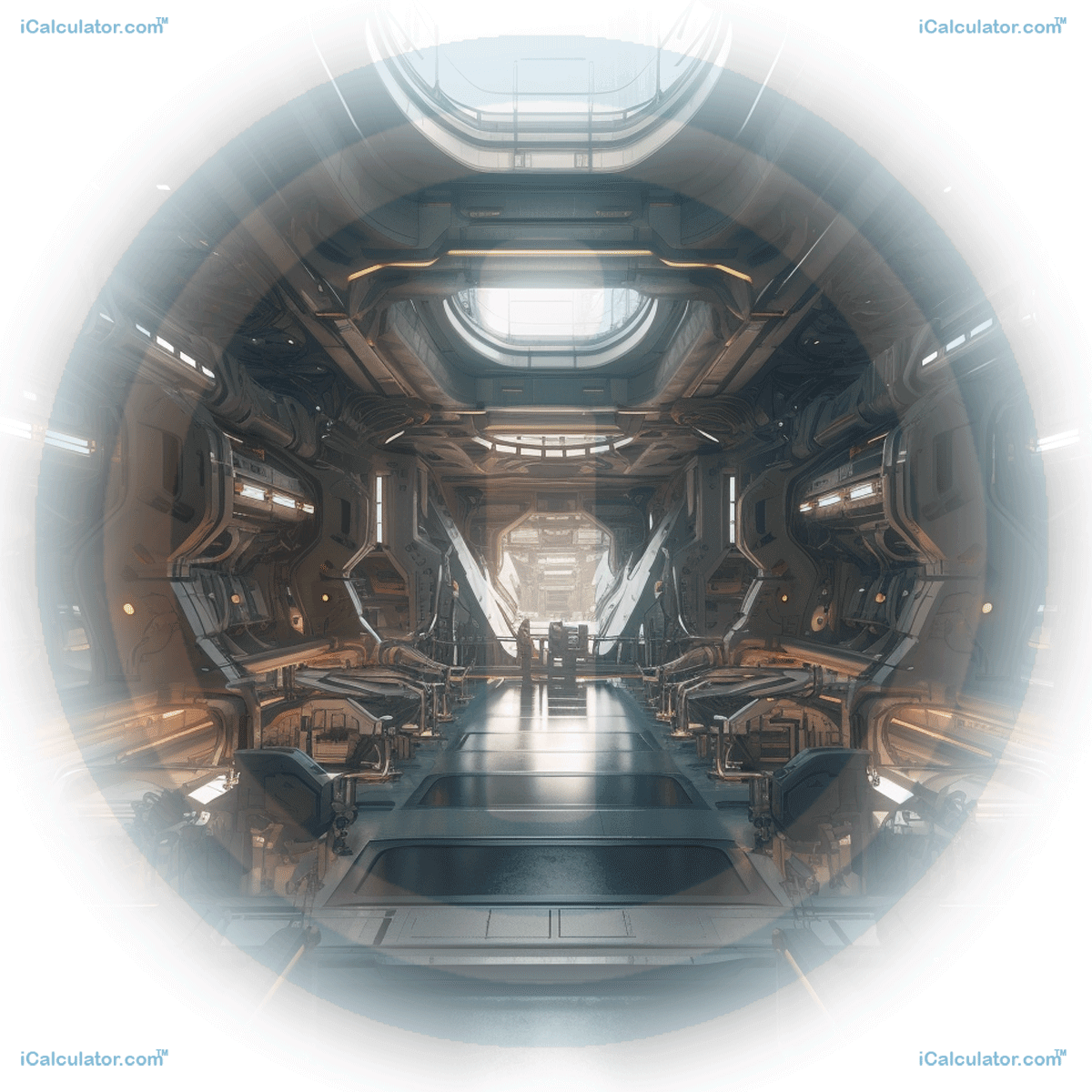Menu
Speaker Sound Q Calculator
Welcome to this tutorial on calculating the Q factor of speaker sound! In the field of engineering, understanding the quality and characteristics of sound produced by speakers is essential in audio systems, music production, and acoustics. This tutorial will introduce the concept of the Q factor in speaker sound, provide interesting facts, explain the formula involved, offer real-life examples, and guide you through the process step by step.
| Horizontal Coverage | ° |
| Vertical Coverage | ° |
| Theoretical Loudspeaker = |
| Directivity Index = Decibels |
Please provide a rating, it takes seconds and helps us to keep this resource free for all to use

Interesting Facts
Before we delve into the calculation, let's explore some interesting facts about speaker sound and the Q factor:
- The Q factor is a measure of the quality and characteristics of resonance in a system.
- In the context of speaker sound, the Q factor represents the sharpness or width of the frequency response curve.
- A high-Q speaker produces a narrow frequency response curve, emphasizing specific frequencies and providing a more focused sound.
- A low-Q speaker produces a broader frequency response curve, resulting in a more balanced sound reproduction.
- The Q factor affects the tonal balance, bass response, and overall sound quality of a speaker system.
Formula Explanation
The calculation of the Q factor of speaker sound involves understanding the resonant frequency and bandwidth of the speaker system. The formula for calculating the Q factor is:
Q = f0 ÷ Δf
Where:
- Q is the Q factor.
- f0 is the resonant frequency of the speaker system (in hertz).
- Δf is the bandwidth of the speaker system (in hertz).
Real-Life Application
The calculation of the Q factor in speaker sound has practical applications in various engineering fields, particularly in audio system design and music production. Understanding the Q factor helps engineers and audio professionals in optimizing sound reproduction and achieving the desired tonal balance.
Let's consider an example: Suppose we have a speaker system with a resonant frequency of 200 Hz and a bandwidth of 50 Hz. We want to calculate the Q factor of this speaker system.
Using the formula, we can calculate:
Q = 200 ÷ 50
Therefore, the Q factor of this speaker system would be:
Q = 4
Hence, the Q factor of this speaker system is 4.
In real-life applications, the Q factor plays a significant role in speaker system design and optimization. It helps engineers determine the desired sound characteristics and select appropriate speaker components, such as the driver and enclosure design, to achieve the desired sound reproduction.
For example, in music production, understanding the Q factor helps audio engineers shape the sound by selecting speakers with the appropriate Q values for different applications. Speakers with high-Q values are often used in studio monitoring systems to provide accurate and detailed representation of the audio content, while speakers with low-Q values may be preferred in live sound reinforcement setups to achieve a wider coverage area and balanced sound distribution.
The Q factor also influences the bass response of a speaker system. High-Q speakers tend to have a more pronounced bass response and are suitable for applications where deep and impactful bass is desired, such as home theater systems or subwoofers. On the other hand, low-Q speakers provide a more controlled and tight bass response, making them suitable for critical listening environments like recording studios or audiophile setups.
In summary, calculating the Q factor of speaker sound involves using the formula Q = f0 ÷ Δf, where Q represents the Q factor, f0 is the resonant frequency, and Δf is the bandwidth of the speaker system. By understanding and utilizing the Q factor, engineers and audio professionals can design and optimize speaker systems to achieve the desired sound characteristics, tonal balance, and overall sound quality.
We hope you found this tutorial on the speaker sound Q calculator informative and helpful. Remember to consider the desired sound characteristics and application requirements when selecting speakers and optimizing sound systems. By leveraging the Q factor, you can enhance the sound experience and create immersive audio environments. Enjoy your journey in the world of speaker sound engineering!
Engineering Calculators
You may also find the following Engineering calculators useful.
- Led Single Circuit Power And Series Resistor Calculator
- Toroid Inductance Per Turn Calculator
- Speaker Sound Q Calculator
- Roadway Rate Of Change On Curve Calculator
- Inductance Of An Air Core Coil Calculator
- Ocean Water Freezing Point Calculator
- Paving Calculator
- Led Energy Savings Calculator
- Speaker Decibel Change From Voltage Calculator
- Microstrip Pcb Differential Impedance Calculator
- Water Pumping Cost Calulator
- Wire Length Of Extension Spring Calculator
- Spiral Transition Curve Tangent Angle Calculator
- Vertical Curve Length Road Sag Calculator
- Bitumen Density Calculator
- 8051 Pic Microcontroller Time Delay Calculator
- Coaxial Line Impedance Calculator
- Inverse Discrete Fourier Transform Calculator
- Bollard Pull Calculator
- Mechanical Advantage Of Wheel And Axle Calculator